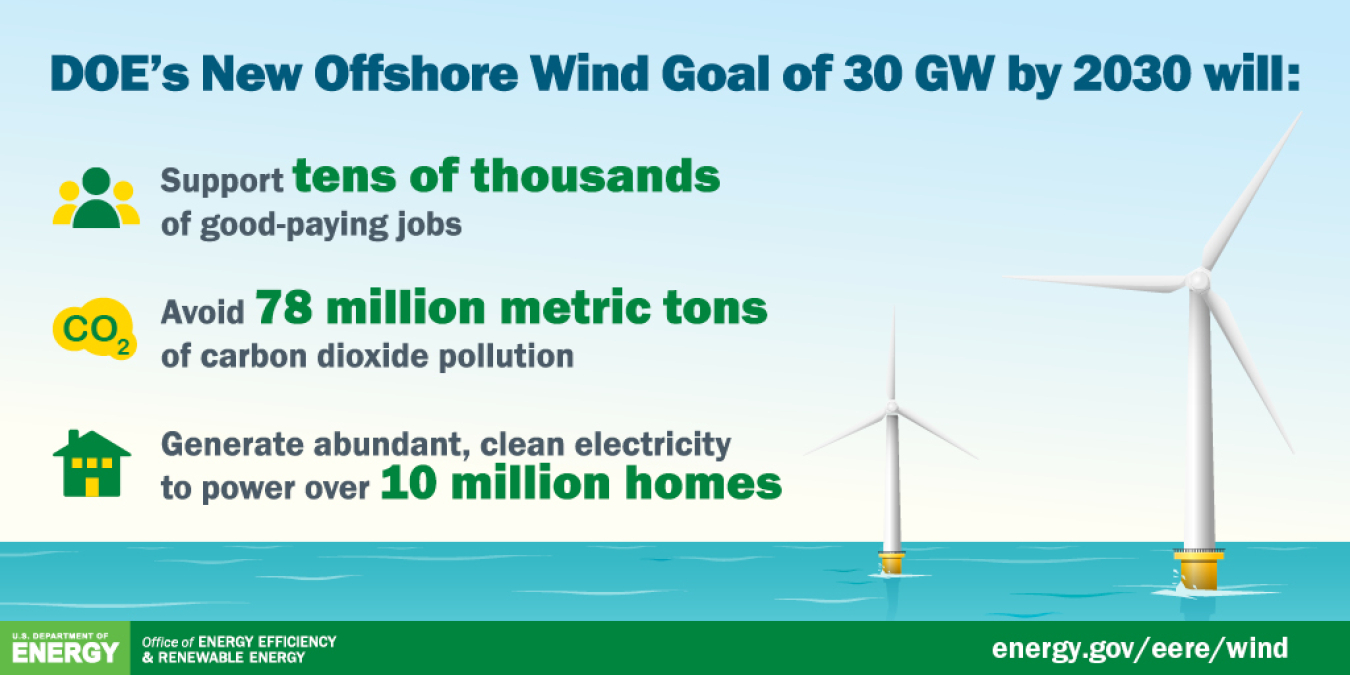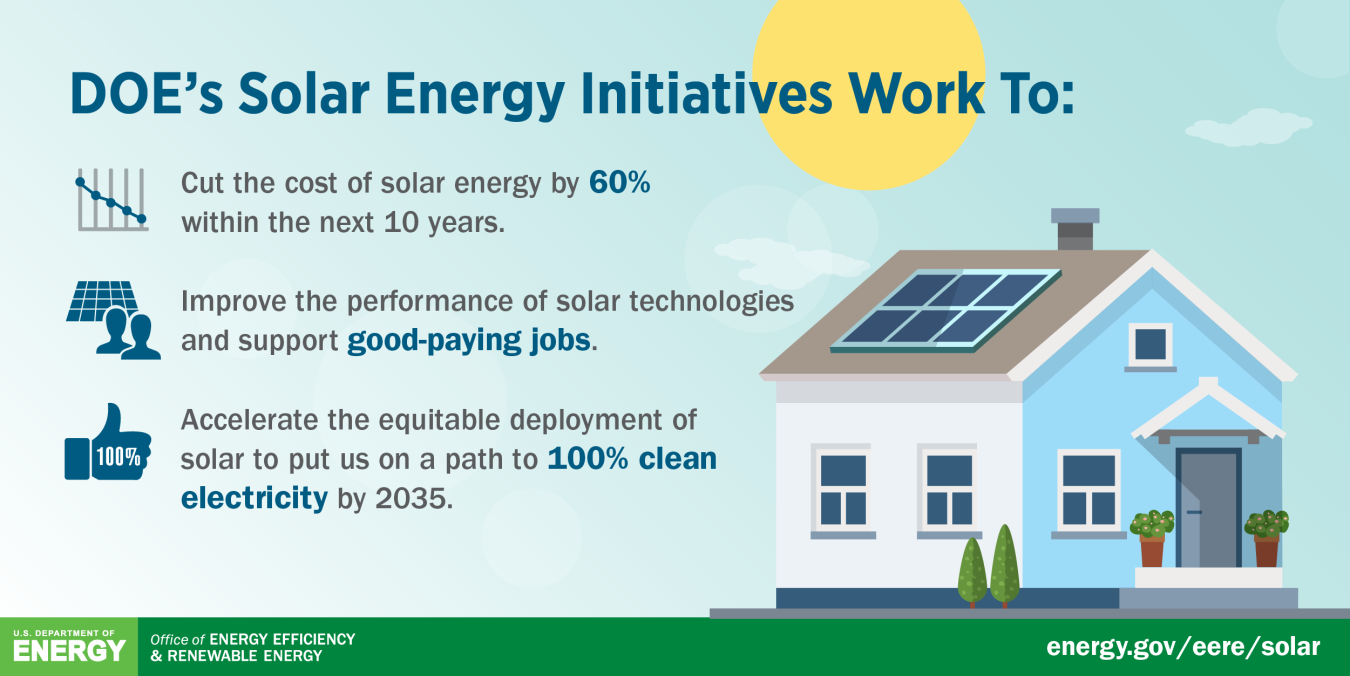
There’s no greater challenge facing our nation and our planet than the climate crisis—and the writing on the wall is that in order to avoid its worst effects, we need to do everything we can to achieve President Biden’s goal of net-zero carbon emissions by 2050.
Currently, nearly 40% of all carbon dioxide pollution comes from power plants burning fossil fuels to create the energy we use every day. That means we need to revolutionize how we generate and use electricity, by making renewable energy sources like wind and solar more abundant, more affordable, and more accessible to everyone.
That’s why last month the Department of Energy (DOE) announced two bold goals: to deploy 30 gigawatts of offshore wind within the decade, and cut the current cost of solar energy by 60% by 2030. These announcements are a big deal for combating the climate crisis, recovering from the economic slowdown caused by the pandemic, and addressing energy justice.
These visionary upgrades for the wind and solar sector will create millions of good-paying union jobs for American workers—maybe even you—building and scaling the technologies that will power American homes, support community development, and cut carbon dioxide emissions.

In partnership with the Departments of Interior, Commerce, and Transportation, DOE’s new offshore wind goal would generate enough clean electricity to power over 10 million homes, and keep 78 million metric tons of carbon dioxide out of the atmosphere. It would also create tens of thousands of good-paying jobs like staffing up wind turbine manufacturing plants, to building and piloting new ships to install turbines, to constructing and maintaining ports.
While we work on scaling up new offshore wind projects and making them cheaper, DOE is also funding research efforts like the Northeast Sea Grant program, which will study the impacts of ocean-based renewable energy—such as offshore wind, wave, current, and tidal energy—on the fishing industry and Northeastern coastal communities.

Meanwhile, DOE’s new solar cost goal is a key step towards making solar—which is already one of the most affordable forms of renewable energy—even cheaper, and therefore even easier for Americans to take advantage of. That starts by funding projects that explore new and advanced solar technologies, so we can speed up their deployment.
DOE is also committed to doing its part to ensure that more Americans have access to these rewarding careers and research opportunities, which is why we’re requiring applicants to also submit plans to increase the participation of underrepresented groups on their teams.
Within days of these announcements, the Biden-Harris Administration announced another massive, historic investment in our planet and our people: $2 trillion for millions of jobs and modern, resilient infrastructure in the American Jobs Plan. This, too, will have a dramatic impact on the climate crisis, by:
- Directing an unprecedented amount of resources to build infrastructure that can withstand the effects of the climate crisis;
- Deploying clean energy technologies at the scale we need, to reduce greenhouse gas emissions at the speed we need;
- Closing up abandoned oil wells and mines to prevent further environmental damage;
- Directing 40% of the overall benefits to underserved and disadvantaged communities, so they can thrive in cleaner, greener futures.
The American Jobs Plan is a once-in-a-lifetime opportunity to tackle the climate crisis head-on, and build a clean energy economy that works for everyone. Be a part of this historic moment by sharing this news with your family and friends. You don’t want them to miss out!
